All about pruning cherries
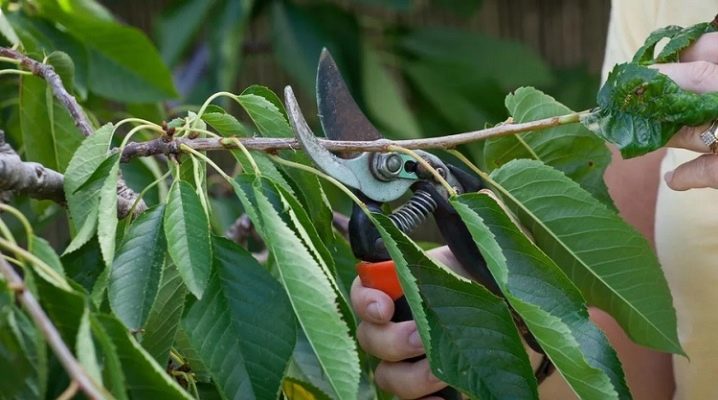
Cherry growers take great care of them so that the trees produce a good harvest. One of the most important agronomic measures in fruit growing is correct and timely pruning. In this article, you will learn why you need to prune cherries, what types of pruning are there, and how to properly carry out this important procedure.
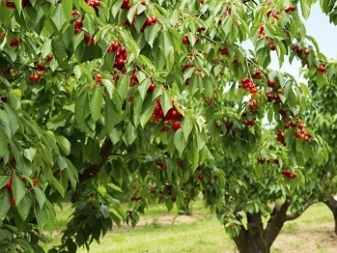
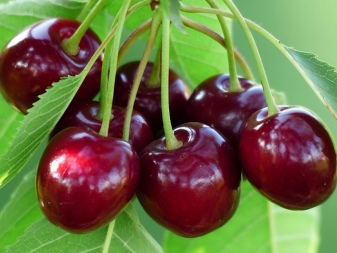
The need for a procedure
Sometimes gardeners believe that pruning cherries is an unnecessary and unnecessary event. People argue this opinion by the fact that even without this procedure, their garden gives a high-quality, rich and stable harvest. Nevertheless due to the lack of care, the tree grows dense branches that do not let light and fresh air into the crown.
If you ignore agrotechnical procedures, the branches inside the crown will begin to gradually die, and the weak shoots located around will produce fewer buds and, therefore, bear less fruit. Lack of sunlight will cause the fruit to be small and low in flavor. Decreased air circulation provides a favorable environment for the development of bacteria and fungi, so the garden becomes sick more often without pruning.
The agrotechnical procedure for thinning shoots carried out in time has a positive effect on the state of cherries:
- increases the amount of harvest;
- reduces the likelihood of disease and pest infestation;
- helps trees to more easily survive strong temperature changes;
- improves the appearance of the crown.
Experienced gardeners know that the greatest amount of fruit ripens on the lateral horizontal branches of the cherry. Correct pruning eliminates the waste of nutrients on barren shoots, so more trace elements are sent to the fruiting branches. This process increases the quality and quantity of the sweet cherry crop obtained.
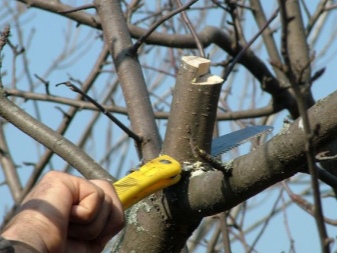
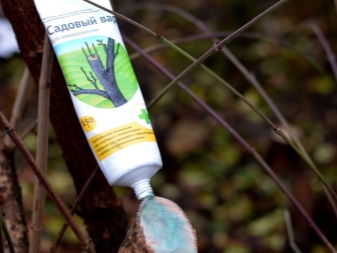
Timing
The first correction of the shape of the tree should be carried out at the time of its planting, however, it is necessary to cut very little so that the seedling does not suffer. The agrotechnical procedure is carried out in several stages - so the sweet cherry will retain its vitality and the level of fruiting. You cannot cut many branches in one season - this will negatively affect the yield and health of the garden.
We suggest that you familiarize yourself with the timing of pruning cherries at different times of the year.
- In winter. During cold weather, trees become fragile and take damage hard, so cutting off many shoots is not recommended, especially if the garden is located in the middle lane, for example, in the Moscow region. Pruning in winter is only permissible for old, large trees, which, due to their age, have a decrease in the amount of yield. In such a situation, you can conduct a rejuvenating agrotechnical event. The most suitable month for the procedure is February. For pruning, choose the warmest day without precipitation or strong winds.
- In the spring. Pruning during flowering is strictly prohibited, so the procedure is best done before bud break. It is also important to remember that the event must be completed before the juice begins to move. Thinning until the buds swell improves air circulation in the crown, and also promotes sunlight on all fruiting branches. Cherries must be carefully examined and dried and damaged sprouts that could not withstand the cold weather be removed.
- Summer. The summer procedure is divided into two steps.The first time the formation is carried out after the trees have faded, and before the fruit is tied. Correction consists in pruning new young shoots and giving the crown a certain shape. The second stage consists of cutting off excess branches immediately after harvest.
- In the autumn. An autumn agrotechnical event is held at the moment when the cherries begin to shed their leaves. It is necessary to complete the formation by the end of September or at the beginning of October. Cutting back the shoots later will prevent the trees from healing in time and may waste a lot of valuable nutrients, making it difficult for the garden to survive the winter.
During the autumn pruning, it is necessary to clean the crown of broken and non-fruiting branches - their absence will save a greater amount of trace elements for the rest of the tree.
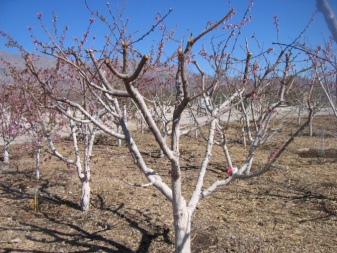
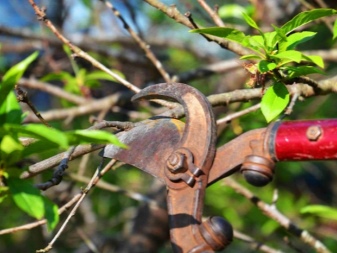
Views
The garden is formed for the first time immediately after planting the seedlings in open ground - the trunk, skeletal branches and crown are corrected for the trees. All shaping procedures should be carried out in the spring, and the thinning of young shoots should be postponed until autumn. However, this rule only applies to young trees - plants over 5 years old can be adjusted at other times of the year. We propose to consider in more detail the description of the types of pruning cherries.


Formative
The formation of the cherry crown must be carried out immediately after transplanting the seedling from the greenhouse into the garden, as well as within the next 5 years. The most important is the correction of a one-year-old plant - during this period, the tree easily survives pruning and easily takes the required shape. The event is carried out in early or mid-spring - as soon as the snow melts. It is very important to start pruning before the buds begin to swell, otherwise you risk seriously injuring the seedling.
Formative pruning is needed to give the crown a neat shape in which it will be comfortable to harvest. And also agrotechnical adjustments are carried out to ensure the density of the branches - the removal of excess shoots has a beneficial effect on fruit-bearing branches.
Pruning also involves removing dry, pest-infested or damaged branches.

Supportive
Maintenance or regulating pruning refers to the annual removal of excess shoots in the spring and fall. The procedure is carried out in order to maintain the previously formed seedling shape. The younger the sprouts you are going to cut, the easier the cut will heal for the tree.
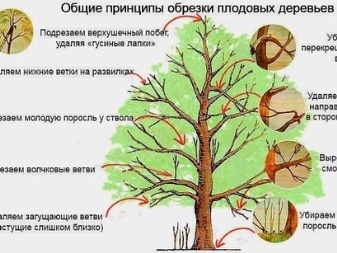
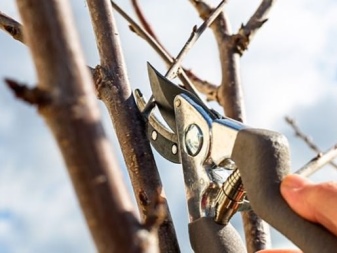
Sanitary
Sanitary pruning is done at least once every 5 years, but this is usually done more often. The best period for its implementation is in the spring before the buds swell or in the fall after harvest. Hygienic pruning involves cutting off diseased branches, which are later necessarily burned to prevent re-disease in the garden.
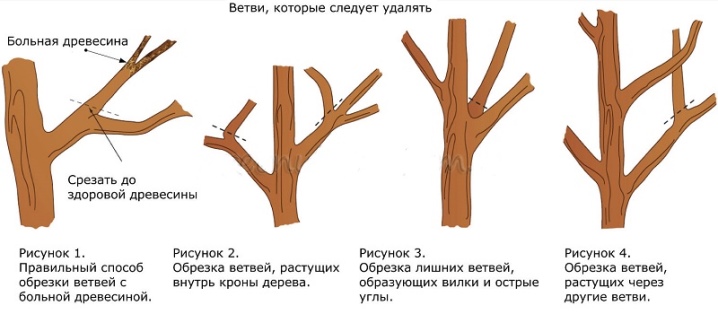
Rejuvenating
Cherry crowns rejuvenate every 5 years or when they see a need for it. A suitable period for pruning is early spring or early autumn, immediately after fruiting. A rejuvenating agrotechnical procedure is needed for additional crown correction and elimination of defective branches. This type of pruning is done only with old or neglected trees.
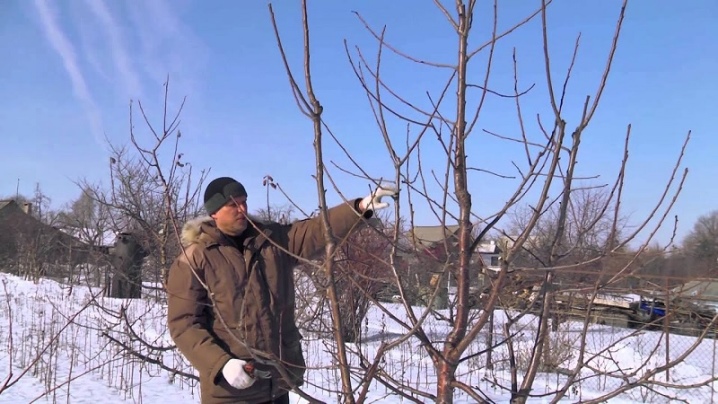
To limit growth upward
Many gardeners cut down the tops of trees to slow the height of the garden, making it easier to pick fruit. The procedure is carried out when they see a need for it, the best time for this is in early spring or at the end of the season. Most often, cherry crowns are given a cup-like shape, which is called the "Australian bush". Another popular type of cherry formation is sparse-tiered crowns, this option is called "Spanish bush".
Effectively limiting tree growth is achieved by shortening the upper raised branches. Cut branches grow more slowly or stop growing altogether, so cherries only grow from the trunk.
Shortening the top of the seedling promotes intensive growth and fruiting of the lateral branches.

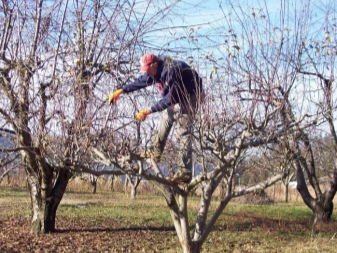
How to trim correctly?
A plan for pruning fruit trees must be drawn up in advance, because when the frame branches are finally formed, it will be impossible to change the shape of the crown. The most common sapling pruning schemes are “Spanish bush” and “Australian bush”. Novice gardeners need to familiarize themselves with pruning technology so as not to harm the seedlings.
Before starting work, stock up on all the necessary equipment and tools:
- pruning shears - a convenient cutting tool for young branches 1-2 cm thick;
- lopper - a pruner with long handles, designed to cut hard-to-reach parts of the crown;
- scissors - this tool is convenient for removing young shoots;
- knife - used for cleaning slices or neat cutting;
- garden saw - the main item used to rejuvenate perennial trees;
- garden gloves - prevent splinters and cuts;
- protective goggles - small chips will fly into the eyes during work, so they also need to be protected;
- stepladder - needed to trim tall cherries;
- rope and spacers - needed to fix fruit branches that interfere with the agrotechnical procedure;
- cuffs are dense material that protects the seedlings from damage.
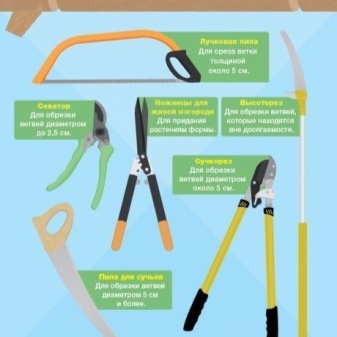

During pruning, it is very important to follow the rules, because cherries have a very thin and fragile bark. The technology for forming a garden is very simple and suitable for beginners, however, you need to know the correct sequence of actions in order to avoid serious mistakes. We suggest that you familiarize yourself with the step-by-step instructions for creating the "Spanish bush" shape.
- The first steps of formation are carried out one year after planting a tree in open ground. In early spring, the grown tree is shortened to 45-70 cm. The specific size depends on how many buds are on the trunk and where the main branches that form the crown will be located.
- Throughout the summer, twigs 40-60 centimeters long will grow from the buds left on the trunk of the seedling. Choose the strongest and largest among them, and then cut off their ends so that the branches are 15-20 centimeters higher than the top of the trunk. To make young shoots grow at a certain angle of inclination, tie them to pegs driven into the ground.
- With the onset of autumn, build supporting trellises next to each tree. Tie all young shoots up to 50 cm long that have grown over the summer to the supports. The use of trellises helps to create an open symmetrical crown - this shape does not block the access of sunlight and air to the center of the cherry, and also makes picking fruit easier.
- After a year, the branches must be re-pruned. All new shoots and last year's shoots attached to the trellises must be cut off, leaving 25 centimeters in length. Large branches near the trunk and growing parallel to the ground do not need to be trimmed.
Correctly performed agrotechnical measure contributes to the development of a good harvest on uncut branches. The shortened shoots will actively branch out, forming a fluffy crown.
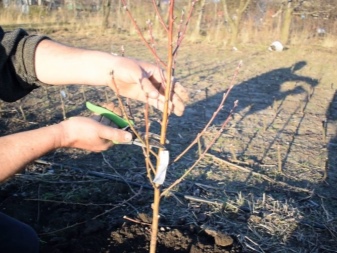
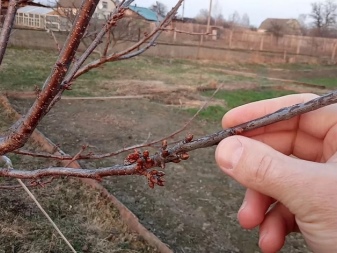
The "Australian bush" pruning method involves creating a low crown - this greatly simplifies harvesting. The complex shape of the branches is strengthened by the presence of several identical trunks. Follow the step-by-step instructions to shape cherries the Australian way.
- Immediately after spring planting in open ground, the seedling is cut to 50 centimeters. From the shoots that have grown over the summer, the four strongest are chosen, and the rest are removed. When the branches become longer than 5-7 cm, attach a clothespin over the growth point of each of them, securing the sprouts parallel to the trunk. This procedure changes the direction of the processes, making them almost perpendicular to the trunk.
- In the second year, the garden is corrected again, examining the crown and removing the loose sprouts. On the main branches, the sprouts of the first tier are not cut off - this will become the basis of the "fruit vase" shape. The procedure must be carried out in early spring so as not to injure the seedlings.
- In the third year after planting, all new processes are cut off, leaving 8-10 cm in length. This procedure is necessary so that the main branches are not shaded by fluffy shoots.
The main agrotechnical measures for the creation of the "Australian bush" at this stage have been completed, then only hygienic cutting of the shading shoots will be necessary. And also care includes the annual removal of young branches in the fall, correction of the shape of the crown and protection from pests.
Cherry pruning is also carried out taking into account the shape of the crown and the age of the trees. Let us consider in more detail each type of agrotechnical measure.

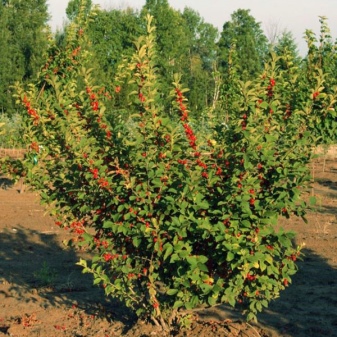
Taking into account the type of crown
Treelike cherries throw out bouquet twigs in the second year after buds are formed - these are the shoots that bear the maximum fruit. A young tree needs to be pruned by thinning the crown and cutting off the ends of excess growth. The height of young shoots should not be higher than 2.4-2.7 m. Consider the stages of annual agrotechnical measures for tree cherries:
- cut off the tops of trees, but leave sprouts shorter than 15-20 centimeters intact;
- we remove the forks - remove the branches directed upwards and towards the trunk;
- then it is necessary to trim the shoots on the guide - this way you will provide the main branches with a sufficient amount of nutrients;
- pinch off dry, diseased and damaged branches;
- remove the bends with a small amount of buds.
In bushy varieties of sweet cherries, the fruits do not develop on the main branches, but on young shoots, so pruning will be carried out in a completely different way. Consider the technology of pruning bushy fruit trees.
- In the first year, cut off all young shoots with bare tops to 1/3 of the length. Shorten large skeletal branches to formed branches.
- You do not need to cut off annual shoots, otherwise the cherries will die immediately after fruiting.
- Prune any shoots that are more than 55 centimeters long to help the branches develop.
- Do not cut to the ring (without hemp) - it is necessary to carry out the procedure for lateral branching.
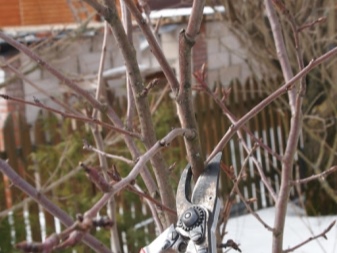
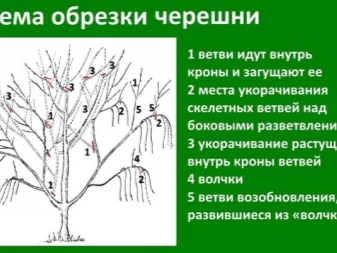
Taking into account the age
By age, the formation of sweet cherries is divided into three stages: for young, fruiting and old trees. Let's take a closer look at each option.
Young plants are pruned every season for 5 years after transplanting from greenhouse to garden.
- First year. When planting, it is necessary to cut the outer branches of the lower tier up to 45 cm - all remaining processes must also be cut to their level. Saw off the trunk 35 cm above the upper lateral bud, and completely remove the shoots growing towards the center. If there are no lateral ramifications yet, simply cut the trunk above the sixth bud.
- Second year. Two-year-old cherries need a little correction - the removal of excess shoots and the formation of the lower layer. Select a few from the lower branches and shorten them to 60 cm, and cut the main shoot at a height of 70 cm above the upper branch. 4 buds should remain on the main shoot for the further development of the sweet cherry.
- Third year. Remove excess growth and trim the second row of shoots so that they are 15 cm shorter than the lower branches. The trunk should be 50 cm higher than the second row, and about 4-6 buds should also remain on it to create the upper tier.
- Fourth year. Cut the main branch so that it is 50 cm below the previous branch growing to the side. The third row of shoots should be 20 cm shorter than the main guide.
- Fifth year. Maintain the shape of the crown by removing excess growth.


Pruning of fruiting cherries is carried out only for hygienic purposes. Adult cherries endure winter easier if a sanitary agrotechnical measure is carried out for the crown. The cutting technology is as follows:
- remove damaged branches, spoiled fruits and diseased growth;
- cut back the growth towards the trunk;
- remove sharp branches;
- if necessary, shorten the main conductor.
Pruning an old plant is done in spring and summer.Old cherries are corrected within three years, removing up to 25-30% of the crown at a time. Features of pruning an old fruitful tree:
- cut down branches that are more than 7-8 years old;
- cut off the main branches around the trunk at a height of 2.5-3.5 meters - this will remove shading from the lower tier;
- cut off the growth of 1-2 years old up to 45 cm;
- examine young shoots and remove the weakest ones;
- from the adjacent sprouts, select the stronger one, and cut the weaker one.
All agrotechnical procedures for an old tree are carried out in order to transfer the main crop to the branches on the sides of the trunk. By cutting off defective and weak shoots, you increase the yield of the main branches and simplify the process of harvesting fruit.
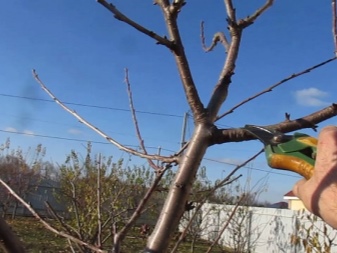
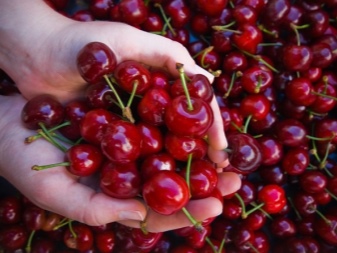
Common mistakes
Sometimes ignorance of several nuances of pruning sweet cherries causes a decrease in yield. And also incorrect agronomic procedures often lead to the death of the garden. To avoid possible problems, we suggest that you familiarize yourself with the most common errors and how to solve them.
- External shoots do not develop, but at the same time the tops stretch upward. To solve this problem, it is necessary to correctly form the crown - to transfer the shoots to skeletal side branches.
- Tops are growing. In such a situation, the crown thickens strongly, the fruits appear very late and move to the very edges of the crown. The cause of the problem is the excessive shortening of the shoots. To avoid this, leave longer branches when pruning young growth.
- Fruiting occurs only at the top. The reason is the incorrect formation of the first tier. To avoid this situation, cut the main conductor at a height of no more than 100 cm.
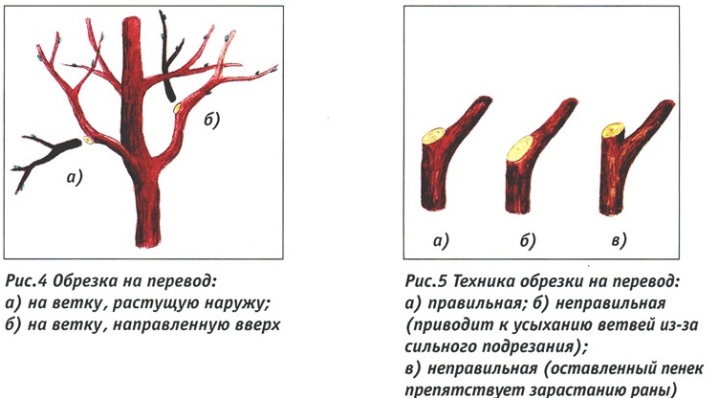






The comment was sent successfully.